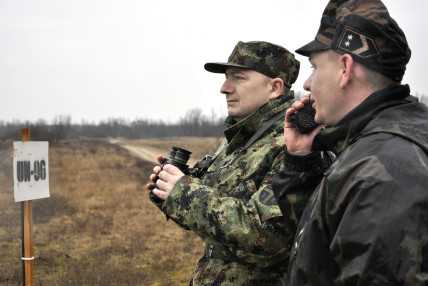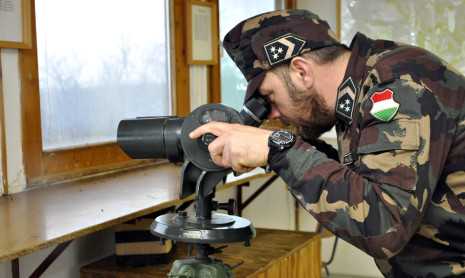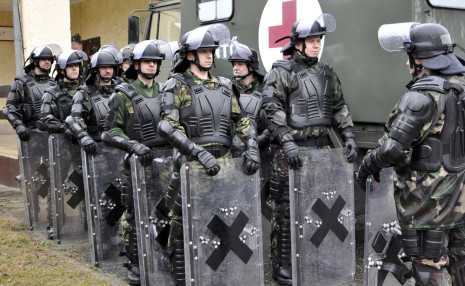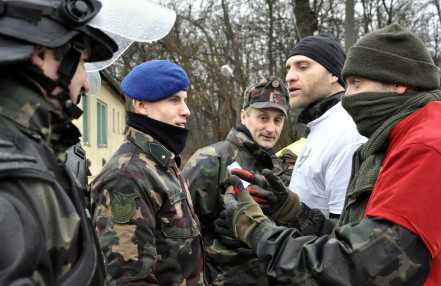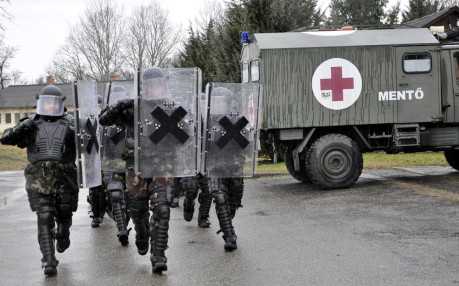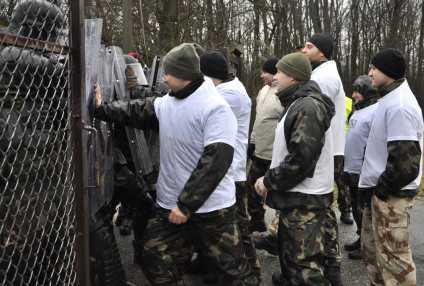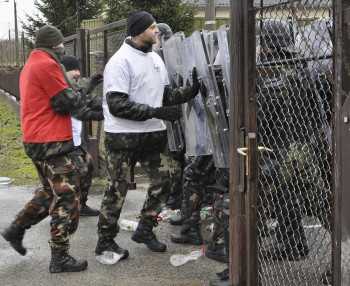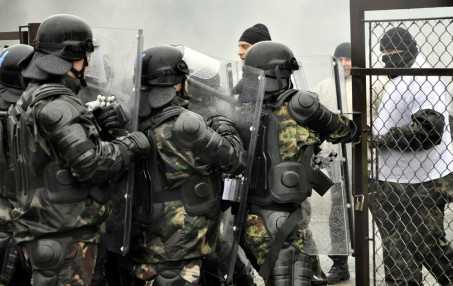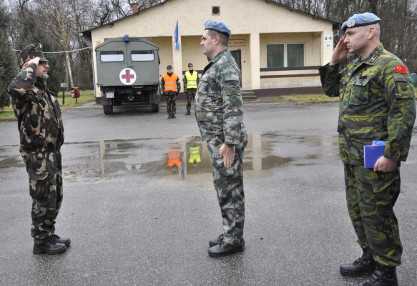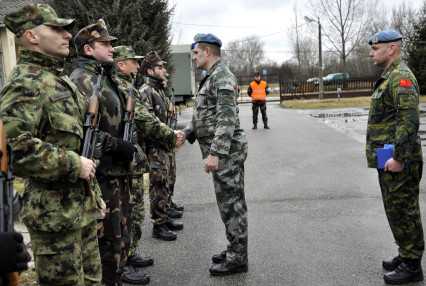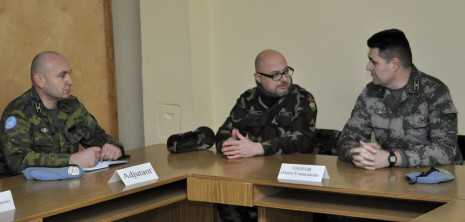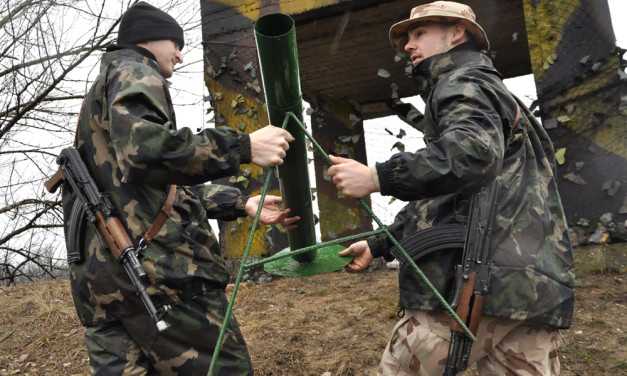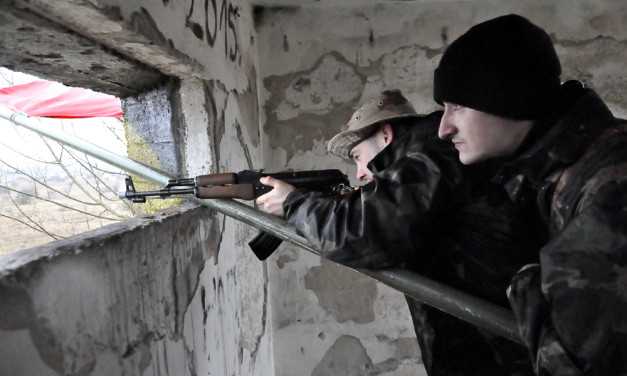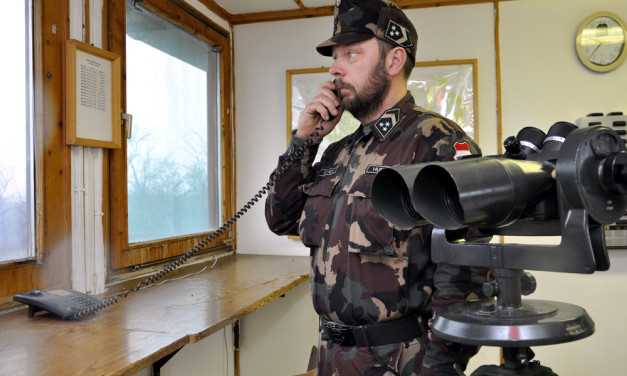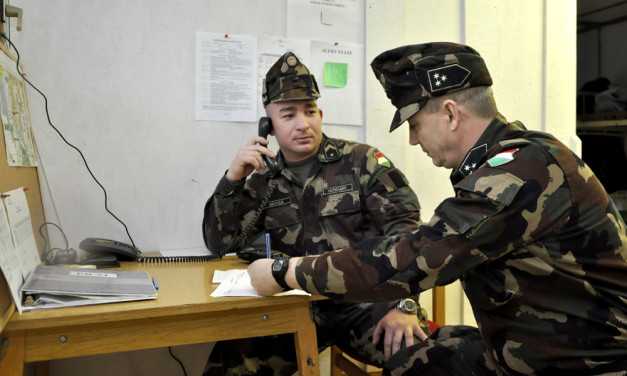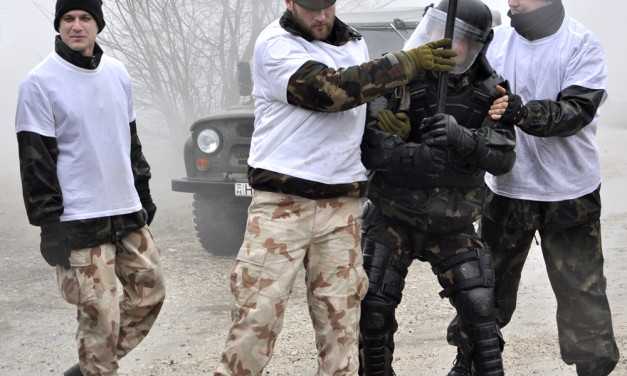Ready for the Mission
Szöveg: Sándor Galambos | 2016. február 18. 9:00The 39th rotation of the Hungarian contingent of the United Nations Peacekeeping Force in Cyprus (UNFICYP-39 HUNCON) has finished its pre-deployment training. The international closing exercise took place in the Táborfalva military training area and range, and the personal interviews were conducted in the HDF Peace Support Training Centre on 12 February.
Galéria
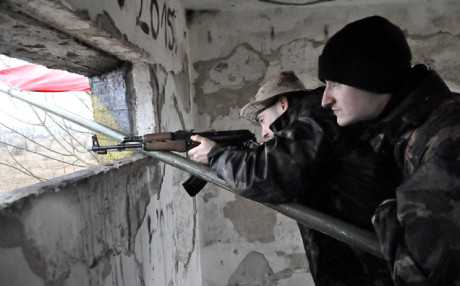
The members of the incoming Hungarian contingent of UNFICYP participated in a four-week pre-deployment training course in the HDF Peace Support Training Centre (HDF PSTC, Szolnok). They are going to travel to Cyprus in March. Most Hungarian peacekeepers will be serving in Sector 4 of the buffer zone on the island that is populated by Greeks and Turks and has been divided since 1974.
Capt. László Bojtos, Deputy Chief of the HDF PSTC Training Division, the director of the closing exercise told us that the members of the mission had started their training on 11 January. Half of the 155-hour training course was taken up with practice sessions. On 1 February, six Serbian soldiers joined the contingent, who will be assigned to Hungarian rifle squads. For the first time, the members of the Hungarian contingent preparing for the Cyprus mission include several policemen, who are going to perform military police duties.
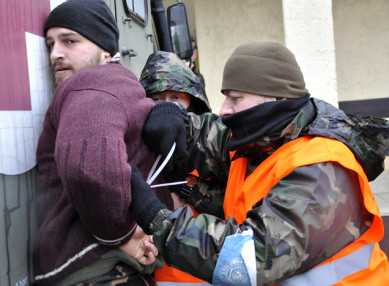
By tradition, the closing exercise for the Cyprus rotation personnel was held in the Táborfalva military training area of the HDF Bakony Combat Training Centre. In accordance with the set of tasks of the mission, the training audience was monitoring the activity of opposing sides inside a designated buffer zone in order to maintain the status quo. Meanwhile, they executed a number of tasks – they operated workstations at the level of sector and platoon commands, manned a permanently deployed patrol base and a number of temporary checkpoints, conducted a crowd riot control (CRC) practice and received the UNFICYP Force Commander. The military policemen as well as the military observer and liaison officers (MOLOs) were also assigned special tasks.
The peacekeepers sent out three patrol squads with Hungarian leaders and Serbian deputy leaders. During the closing exercise, the role-players simulated various signals and incidents, and the training audience had to handle these in compliance with the UNFICYP standard operating procedures (SOPs). The four-day non-stop exercise was directed by three officers and three NCOs from the training centre working with the assistance of mentors who have recently returned home from the Cyprus mission.
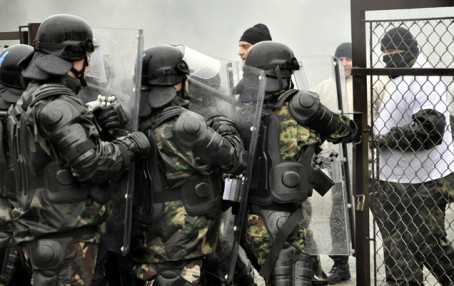
As a key nation, Hungary is doing its share of peacekeeping on the island. The Hungarian peacekeepers’ primary responsibilities are to separate the opposing forces and to preserve the status quo in a buffer zone. This involves some further duties, namely to prevent the establishment or reinforcement of military positions as well as military maneuvers/provocations and prohibited construction works, to detect airspace violations and to keep out illegal intruders. They also tasked with providing law enforcement support for demonstrations and mass events on certain occasions and securing diplomatic negotiations between Greek and Turkish Cypriot leaders.
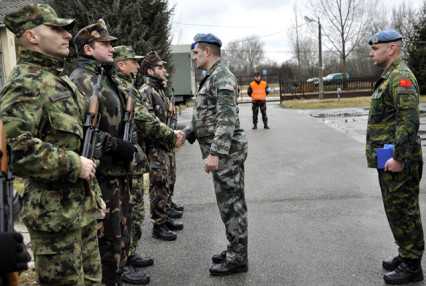
The United Nations Peacekeeping Force in Cyprus (UNFICYP) is not only one of the longest-running UN missions, but also one of Hungary’s first foreign engagements, which has been going on continuously. In the beginning, the Hungarian Defence Forces sent small teams of military observers with UN mandate to hot spots in Africa (Angola, Uganda, Mozambique) and the Middle East (Iraq, Kuwait). They joined the UNFICYP mission – the guarantee of peace in Cyprus – with a four-man observer team in 1993. The first large UN-mandated Hungarian peacekeeping force deployed to Cyprus in 1997, and started operating as the Hungarian company of an Austrian–Hungarian–Slovenian peacekeeping battalion. It was Austria that had the lead nation role at the time. The Hungarian “blue berets" were stationed in “Camp Berger" (the village of Akincilar) and “Camp Izay" (the village of Athienou), and were performing their duties in these zones. The company commanders and platoon leaders maintained direct contact with the opposing forces.
Photos by the author
